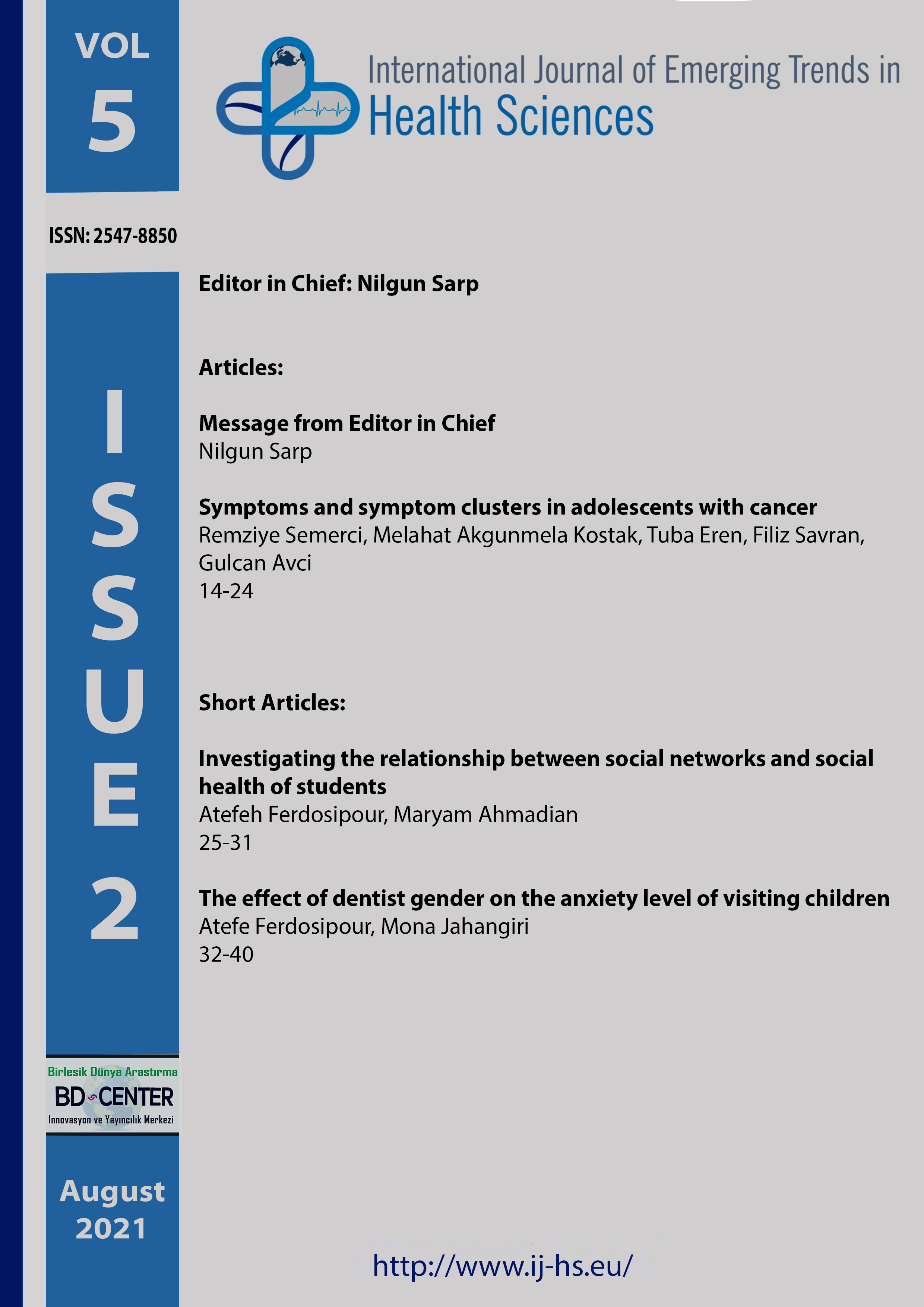Symptoms and symptom clusters in adolescents with cancer
Main Article Content
Abstract
Abstract
Clinical specialists have suggested that adolescents with cancer experience multiple problems including physical, psychological, and emotional symptoms. This study aimed to identify symptoms and symptoms clusters among adolescent inpatients and outpatients receiving cancer treatment. The study’s sample consisted of 26 adolescents who were selected with the purposeful sampling method in a paediatric oncology unit in Edirne, Turkey. Data were collected using the Memorial Symptom Assessment Scale (MSAS). From the results of the research, in terms of symptoms, outpatients reported a greater lack of concentration than inpatients did. Inpatients reported more hair loss and weight loss symptoms than outpatients. Adolescent inpatients and outpatients experienced the most symptoms during the treatment. Inpatient adolescents experienced more acute treatment-related symptoms than did outpatients. The study recommends regular monitoring and screening for nurses to identify symptom and symptom clusters.
Keywords: Adolescent; nursing; symptom cluster; symptom assessment; cancer;
Downloads
Article Details

This work is licensed under a Creative Commons Attribution 4.0 International License.
Authors who publish with this journal agree to the following terms:
- Authors retain copyright and grant the journal right of first publication with the work simultaneously licensed under a Creative Commons Attribution License that allows others to share the work with an acknowledgement of the work's authorship and initial publication in this journal.
- Authors are able to enter into separate, additional contractual arrangements for the non-exclusive distribution of the journal's published version of the work (e.g., post it to an institutional repository or publish it in a book), with an acknowledgement of its initial publication in this journal.
- Authors are permitted and encouraged to post their work online (e.g., in institutional repositories or on their website) prior to and during the submission process, as it can lead to productive exchanges, as well as earlier and greater citation of published work (See The Effect of Open Access).
